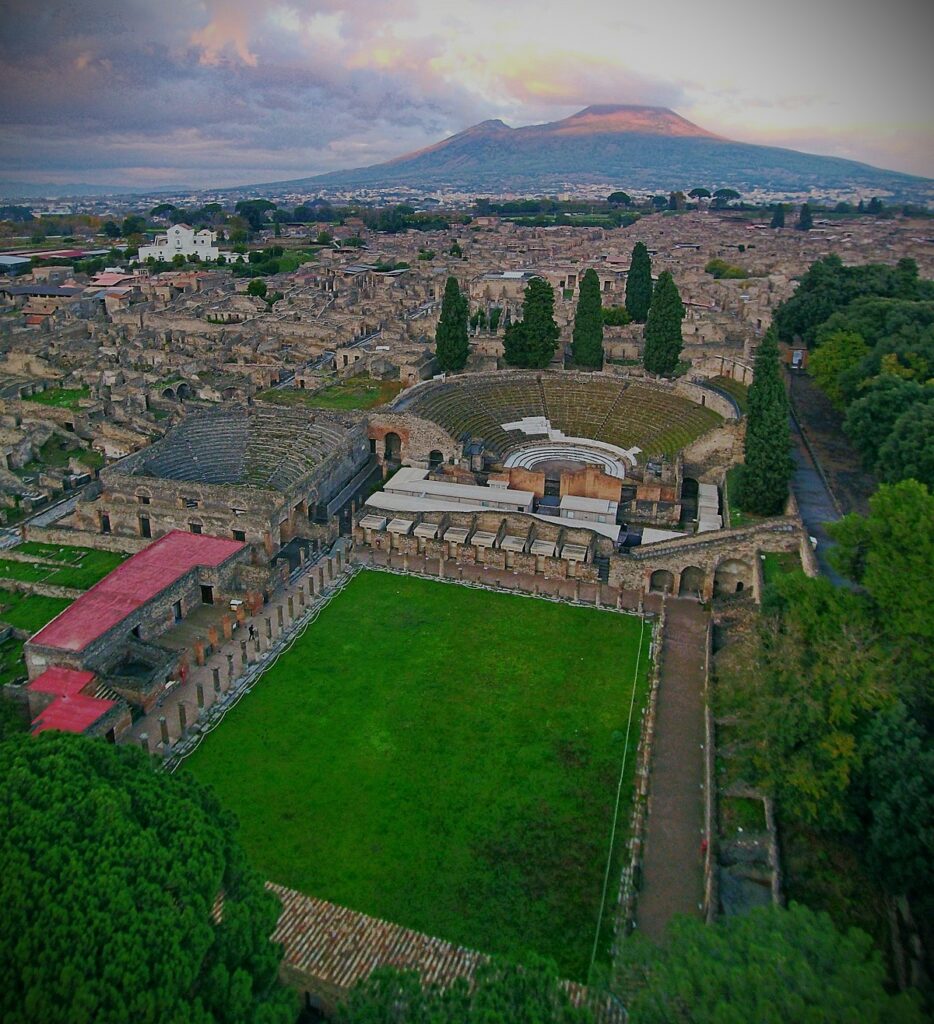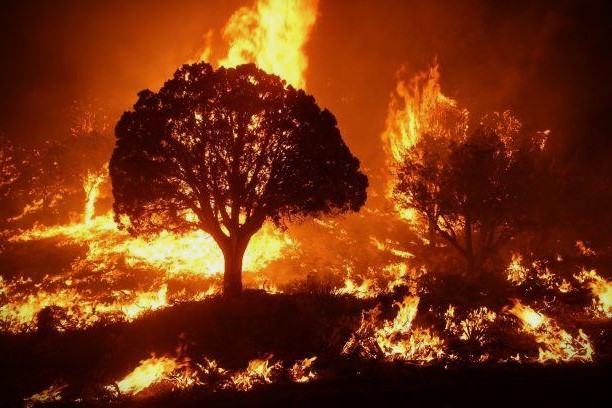
In 79 AD, the thriving Roman city of Pompeii was unexpectedly entombed beneath a thick layer of volcanic ash, sealing its fate and preserving an extraordinary snapshot of ancient life. Buried by the catastrophic eruption of Mount Vesuvius, Pompeii remained forgotten for nearly 1,700 years, only to be rediscovered as one of the most astonishing archaeological sites in history.
The Glory of Pompeii: A City of Wealth and Wonder
Long before its destruction, Pompeii was a bustling Roman hub situated near the Bay of Naples. Originally settled by the Oscans in the 7th century BC, the city later flourished under Greek, Etruscan, and Roman rule. By the 1st century AD, Pompeii was a cultural and commercial hotspot, known for:
- Lavish villas adorned with intricate mosaics and frescoes.
- Bustling markets selling everything from exotic spices to fine Roman wine.
- Theaters and amphitheaters, where plays and gladiator battles entertained the masses.
- Sophisticated infrastructure, including paved roads, aqueducts, and even indoor plumbing.
Pompeii wasn’t just a city—it was a testament to Roman engineering and culture, with an economy fueled by trade, agriculture, and tourism from wealthy Romans seeking seaside luxury.
The Beginning of the End: Vesuvius Awakens
Ignored Warnings
Pompeii’s doom didn’t come without warning. Seismic tremors shook the region in the years before the eruption, including a major earthquake in 62 AD that damaged parts of the city. However, many residents failed to recognize the danger, assuming the tremors were unrelated to any volcanic activity.
At the time, Mount Vesuvius was not seen as a threat. It had been dormant for centuries, and there was no recorded history of an eruption. The people of Pompeii carried on with daily life, unaware that disaster was approaching.
August 24, 79 AD: A City Falls Silent
At approximately midday, Mount Vesuvius erupted with a force thousands of times greater than an atomic bomb. A colossal column of ash, gas, and molten rock shot into the sky, darkening the sun. What followed was nearly 18 hours of destruction.
The Stages of Disaster
- Ash and Pumice Fall – For hours, volcanic debris rained down, covering streets and collapsing roofs under the weight. Many people attempted to flee, but roads became impassable.
- Toxic Gases Spread – Sulfurous fumes filled the air, suffocating those trapped inside buildings.
- The Pyroclastic Surge – The final and deadliest stage occurred early the next morning. A fast-moving cloud of superheated gas and volcanic material—reaching temperatures over 1,000°F (500°C)—rushed down the mountain at speeds over 100 mph, incinerating everything in its path within seconds.
By dawn, Pompeii was gone, buried beneath 15 feet of ash, with thousands of its citizens frozen in their final moments.
Lost and Found: The Rediscovery of Pompeii
For over 1,600 years, Pompeii lay hidden beneath volcanic rock, forgotten by history. It wasn’t until the 18th century that explorers stumbled upon its ruins. What they uncovered was nothing short of miraculous—a city almost perfectly preserved, as if time had stood still.
Archaeologists have since unearthed:
- Buildings and homes still standing, complete with furniture and murals.
- Graffiti on walls, revealing ancient humor, political messages, and personal notes.
- Plaster casts of victims, created by filling voids left in the ash where bodies once lay, capturing expressions of fear and agony.
- Evidence of daily life, from loaves of bread still intact in ovens to jars of preserved fruit.
Pompeii’s preservation has provided unparalleled insight into Roman civilization, making it one of the most valuable archaeological sites in the world.
Pompeii Today: A Frozen Legacy
Now a UNESCO World Heritage Site, Pompeii draws millions of visitors each year, offering a chilling yet mesmerizing glimpse into a civilization stopped in its tracks. It remains a poignant reminder of nature’s fury and a testament to the ingenuity of the ancient world. More than just ruins, Pompeii stands as a ghostly echo of the past, whispering stories of a people whose lives were cut short but never truly forgotten.






